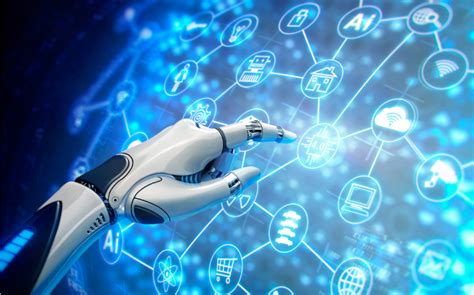Research Artificial Intelligence

Artificial intelligence (AI) refers to the development of computer systems that can perform tasks that typically require human intelligence, such as visual perception, speech recognition, decision-making, and language translation. The field of AI has undergone significant advancements in recent years, with applications in various industries, including healthcare, finance, transportation, and education.
History of Artificial Intelligence

The concept of AI dates back to the 1950s, when computer scientists like Alan Turing, Marvin Minsky, and John McCarthy began exploring the possibility of creating machines that could think and learn like humans. The term “Artificial Intelligence” was coined by John McCarthy in 1956, and the first AI program, called Logical Theorist, was developed in 1956 by Allen Newell and Herbert Simon.
Key Milestones in AI Development
Some significant milestones in the development of AI include the creation of the first AI laboratory at Stanford Research Institute (SRI) in 1966, the development of the first expert system, called MYCIN, in 1976, and the introduction of the first commercial AI product, called R1, in 1980. The 1990s saw the rise of AI research in areas like machine learning, natural language processing, and computer vision.
| Year | Milestone |
|---|---|
| 1956 | First AI program, Logical Theorist, developed |
| 1966 | First AI laboratory established at SRI |
| 1976 | First expert system, MYCIN, developed |
| 1980 | First commercial AI product, R1, introduced |

Types of Artificial Intelligence

There are several types of AI, including narrow or weak AI, which is designed to perform a specific task, and general or strong AI, which is designed to perform any intellectual task that a human can. Other types of AI include superintelligence, which refers to an AI system that is significantly more intelligent than the best human minds, and artificial general intelligence (AGI), which refers to an AI system that can perform any intellectual task that a human can.
Narrow AI Applications
Narrow AI has many practical applications, including image recognition, speech recognition, and natural language processing. For example, virtual assistants like Siri, Alexa, and Google Assistant use narrow AI to understand voice commands and respond accordingly. Self-driving cars also use narrow AI to recognize and respond to their environment.
- Image recognition
- Speech recognition
- Natural language processing
- Virtual assistants
- Self-driving cars
Artificial Intelligence Techniques
AI techniques include machine learning, which involves training algorithms on data to enable them to make predictions or take actions, deep learning, which involves the use of neural networks to analyze data, and natural language processing, which involves the use of algorithms to understand and generate human language.
Machine Learning Algorithms
Machine learning algorithms include supervised learning, which involves training algorithms on labeled data, unsupervised learning, which involves training algorithms on unlabeled data, and reinforcement learning, which involves training algorithms to take actions in an environment to maximize a reward.
| Algorithm | Description |
|---|---|
| Supervised learning | Training on labeled data |
| Unsupervised learning | Training on unlabeled data |
| Reinforcement learning | Training to maximize a reward |
Artificial Intelligence Applications
AI has many practical applications, including healthcare, finance, transportation, and education. For example, AI can be used to analyze medical images, predict patient outcomes, and personalize treatment plans. AI can also be used to detect financial fraud, predict stock prices, and optimize supply chains.
AI in Healthcare
AI has many potential applications in healthcare, including medical imaging, patient diagnosis, and personalized medicine. For example, AI can be used to analyze medical images, such as X-rays and MRIs, to detect abnormalities and diagnose diseases. AI can also be used to analyze patient data, such as medical histories and genetic profiles, to predict patient outcomes and personalize treatment plans.
- Medical imaging
- Patient diagnosis
- Personalized medicine
- Patient outcome prediction
- Treatment plan personalization
What is Artificial Intelligence?
+Artificial intelligence (AI) refers to the development of computer systems that can perform tasks that typically require human intelligence, such as visual perception, speech recognition, decision-making, and language translation.
What are the types of Artificial Intelligence?
+There are several types of AI, including narrow or weak AI, general or strong AI, superintelligence, and artificial general intelligence (AGI).
What are the applications of Artificial Intelligence?
+AI has many practical applications, including healthcare, finance, transportation, and education, and can be used to analyze medical images, predict patient outcomes, and personalize treatment plans, as well as detect financial fraud, predict stock prices, and optimize supply chains.



